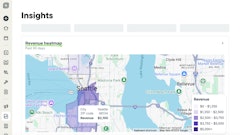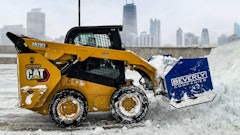
Gathered both from direct experience with landscape companies, but also through evaluating hundreds of companies per year, here are four trends that are top of mind for owners and management teams of landscaping companies in 2024 below.
Continued consolidation
One trend we’ve seen continue to grow in the landscaping industry, and particularly on the commercial side of the sector, is consolidation. Commercial customers in particular tend to prefer larger scale landscape platforms that offer comprehensive services and that can act as a sole-source provider, rather than using multiple small providers. This makes it increasingly harder for smaller companies to compete effectively in the space. Larger, comprehensive providers have more access to labor, greater geographic reach, more or better equipment and synergies across services or back-office functions. Smaller companies finding themselves squeezed may even become desirable targets for acquisition.
Pricing and cost pressures
We expect the relatively high inflation (relative to pre-COVID levels) environment to persist for several years. That means that the cost pressures owners are used to by now will continue. Fuel and labor are particularly susceptible to macro conditions. This is part of the reason we’ve seen an increasing trend toward outsourcing in the commercial landscape sector to drive cost and labor efficiencies.
In some industries, owners are able to pass through these rising costs to customers. Landscape companies may find themselves unable to take advantage of price increases with many customers. While it’s widely believed that we have reached the top of the interest rate cycle, senior debt is now priced at approximately 8 percent, and many banks are rationing credit to existing borrowers. High rates, combined with increasing consumer debt, is creating downward pressure on pricing because consumers (both individuals and businesses) are looking to reduce spending. Owners that offer unique, niche, or specialized services, or who can boast superior customer service (whether that relates to quality, timeliness, etc.), may find themselves with greater pricing power.
Technology innovation
Part of finding this unique angle can relate to technological innovation, an area we’ve seen gaining steam in recent years. Part of this is driven by the high-cost environment already discussed, and part is driven by the aging population in the U.S. (and other developed countries), which will continue to impact the labor market and cause upward wage pressure over the long term. We’re seeing more and more product companies that have innovative solutions that replace labor and create efficiencies; think driverless or robotic mowers, or drones that can spray vegetation. Owners and management teams should consider where investments in technology now can offset future margin erosion and create a more sustainable cost position for the company to scale from. This could mean incorporating others’ technology into your own business processes or developing proprietary technology.
Election year uncertainty
Recruitment and retention of labor has always been a challenge in this industry, but we see particular risk in this area coming into an election year. Many landscaping companies, particularly those that do not staff year-round, rely on H-2B visa programs to provide seasonal labor opportunities. Even those companies that do staff year round may also rely on these programs to reach a full labor force. Historically, the success or availability of H-2B visas can be variable and highly dependent on the administration in power. Given the uncertainty of the election result, owners would be wise to have contingency plans in place to meet staffing needs. This point also highlights the importance of technological innovation previously discussed.
Many of these trends are intertwined, and all require owners to think longer-term, beyond just this season or this year. Investments in technology, growth and differentiation all directly counter these trends while also positioning a company for greater success years down the road.













![Gravely Pro Turn Mach One My23 Dsc03139 Edit 1200x800 5b2df79[1]](https://img.greenindustrypros.com/mindful/acbm/workspaces/default/uploads/2025/10/gravely-pro-turn-mach-one-my23-dsc03139-edit-1200x800-5b2df791.BucBnDoN22.jpg?ar=16%3A9&auto=format%2Ccompress&fit=crop&h=135&q=70&w=240)






